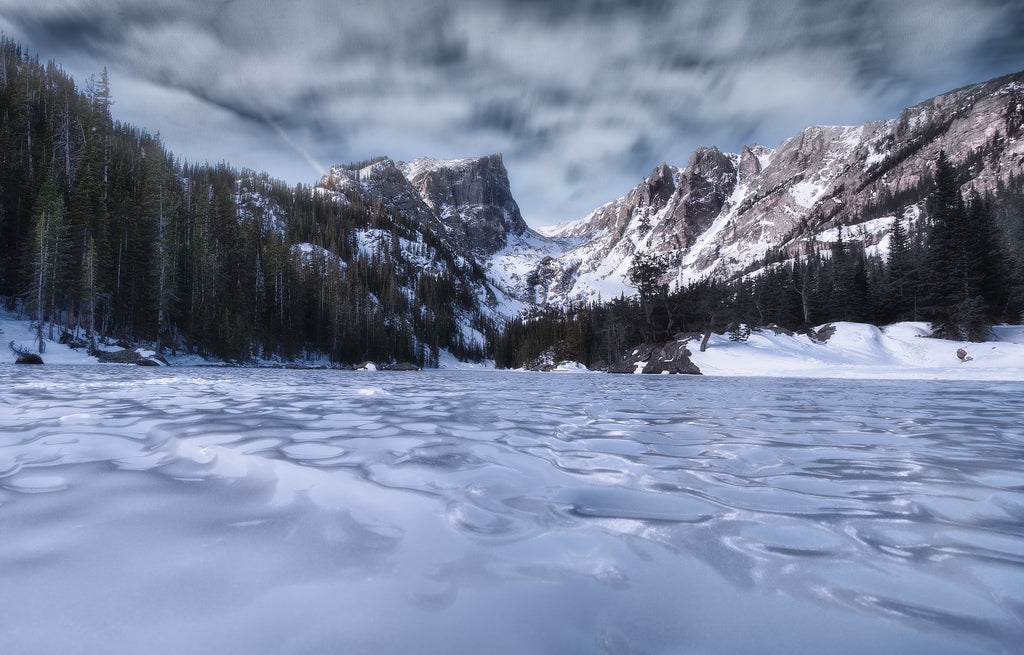Published November 1, 2001 12:00AM
Safe Hiking On Frozen Lakes
How to hike safely across frozen lakes and ponds

'Careful when you cross. (Photo by Max and Dee Bernt/Flickr)'
Lakes are the most elegant and often the easiest routes into a winter wilderness. After years of plying frozen ponds in the upper Midwest, I’ve learned to pay attention to the nuances of ice formation. Here’s how to decide if you’re better off on the ice or along the shore.
- Check with local rangers about current conditions. Each year’s ice is a little different, depending on snowfall and seasonal temperature variations. If heavy snow arrives before the ice thickens, for instance, it can insulate the ice, resulting in a weak layer.
- Avoid known weak spots such as springs. Moving water hampers ice formation, so note where streams enter and leave the lake. There might also be a slight current at narrow spots in a lake.
- Favor the south shore. Since trees typically shelter the south shore of a lake from direct winter sunlight, the strongest ice is usually there.
- Scan ahead for dark areas that may indicate water seeping up through a crack or thin ice.n Avoid protrusions such as rocks or logs that radiate solar heat, creating a surrounding ring of weaker ice.
- Know your animals. Fresh deer tracks usually indicate solid ice, while otter tracks often lead to openings.
- Use a ski pole to probe the ice ahead of you, listening for the “tick” sound of solid ice. Back off if you hear the “tock” sound of weak ice. One-inch-thick freshwater ice will probably hold you up; 2 inches certainly will.
- Distribute your weight by wearing skis or snowshoes. This reduces your chance of breaking through weak ice.
- Always have a “claw” (a short screwdriver works well) handy to help you pull yourself out if you do fall in.
For more information on safe ice travel, check out the Outdoor Action Guide to Winter Camping, by Rick Curtis, at www.princeton.edu/~oa/
winter/wintcamp.